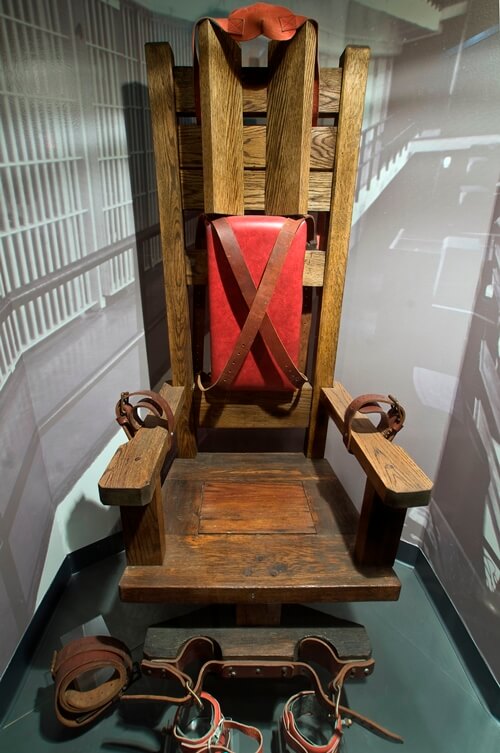Before alternating current (AC) was the norm, Thomas Edison tried his damnedest to show how dangerous it was, while, at the same time, promoting his method of electricity delivery: direct current (DC). Edison predicted that George Westinghouse’s AC generators were “just as certain as death. [He] will kill a customer within six months after he puts in a system of any size.”
A letter delivered from dentist Alfred P. Southwick in November 1887 gave Edison an idea. Southwick suggested, after seeing a man accidentally touch an electric generator, that electricity could be used for executions. Though Edison was staunchly against capital punishment, he was also staunchly against Westinghouse gaining market share, so he decided to show just how lethal alternating current was by killing scores of dogs in his lab—as well as several calves and a horse—before New York state officials.
They liked the idea, and Edwin Davis built the first electric chair (Edison paid to make sure AC was used). On August 6, 1890, convicted murderer William Kemmler was subjected to a lethal dose of electricity and became the first criminal to be killed via electrocution. Despite Edison’s efforts (and money), AC current soon became the industry standard, and 4,443 people (26 were women) followed in Kemmler’s “dead man walking” footsteps.
6
percent of work-related deaths due to electrocutions
61
percent of electrocutions due to high-voltage power lines
2
amperage that can cause cardiac arrest
15/20
common fuses (measured in amps)
350
annual fatal electric shocks each year in the United States
83
percent of deaths due to low-voltage circuits (<1,000 volts)
14
age of George Junius Stinney Jr., who was killed in South Carolina’s electric chair in 1944
Death by Electrocution
There is much controversy surrounding the death penalty, and electrocution specifically, but the system is designed to deliver up to 2,450 volts at 7.5 amps for around 20 seconds and then a lesser voltage of 240 volts at 1.5 amps for as much as 60 seconds. The initial voltage is supposed to stop the heart and render the prisoner unconscious, while the second voltage destroys internal organs. If it doesn’t, the process is repeated.
Most times, electrocution happens at much lower voltage levels; most people are exposed to voltages of 110 to 220. Copper thieves, electricians, and construction workers can be subjected to enough voltage to seriously injure them, but their injuries are more pronounced, and death usually takes a lot longer.
What Happens When You Are Electrocuted?
Walking down the street, you see an interesting cable laying on the ground. Wondering where it came from, you grab it, not knowing it is a live wire that you just grounded, sending 2,000 volts through you in an instant. Eventually, your heart stops. Your brain stops. You are dead. But what really happened? See below:
> Rapid irregular contractions of the heart until it stops.
> The body heats up to approximately 210 degrees F.
> The eyeballs melt.
> The body will convulse uncontrollably.
> The skin will be burned at the entrance and exit points.
> A scorched path will be burned through the body.
> Hair may catch on fire.
> Bodily functions will be lost.
> All muscles will tightly contract.
> Breathing is impossible.
> The brain will begin to bake.
> Stomach acids and contents will foam out of the mouth.
> The blood will begin to boil.
Editor’s note: A version of this article first appeared in the November 2015 print issue of American Survival Guide.


